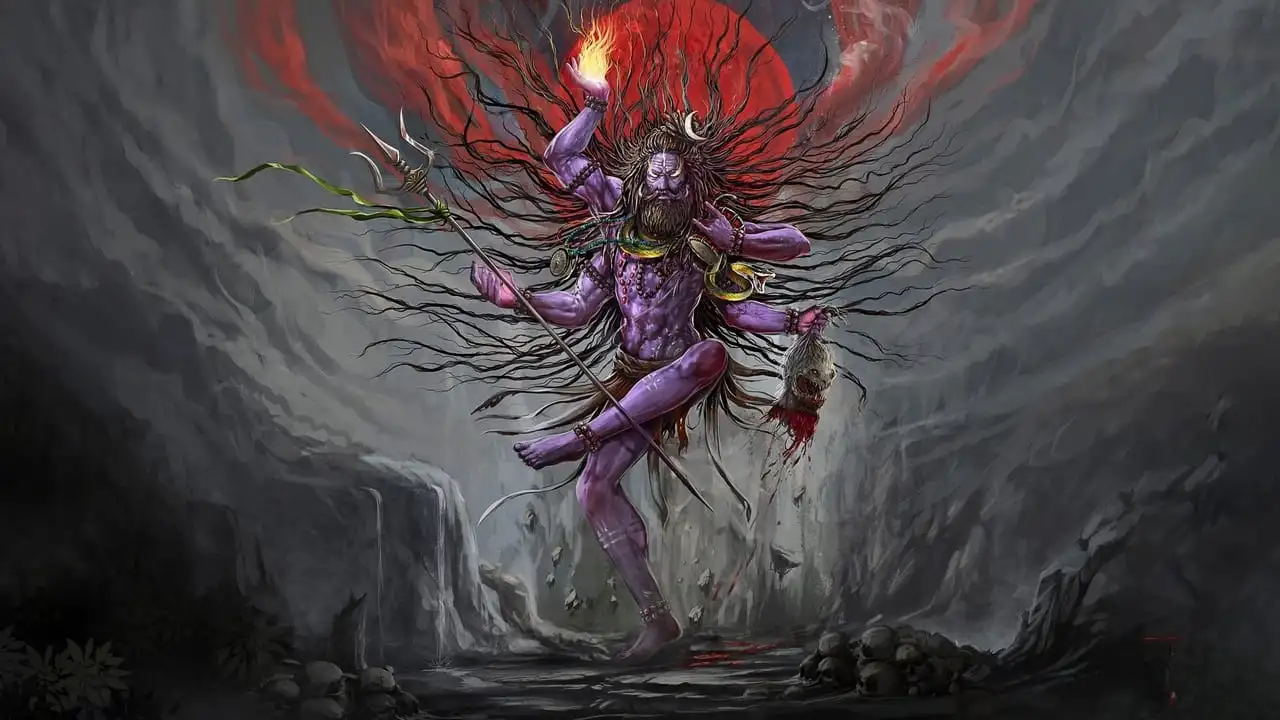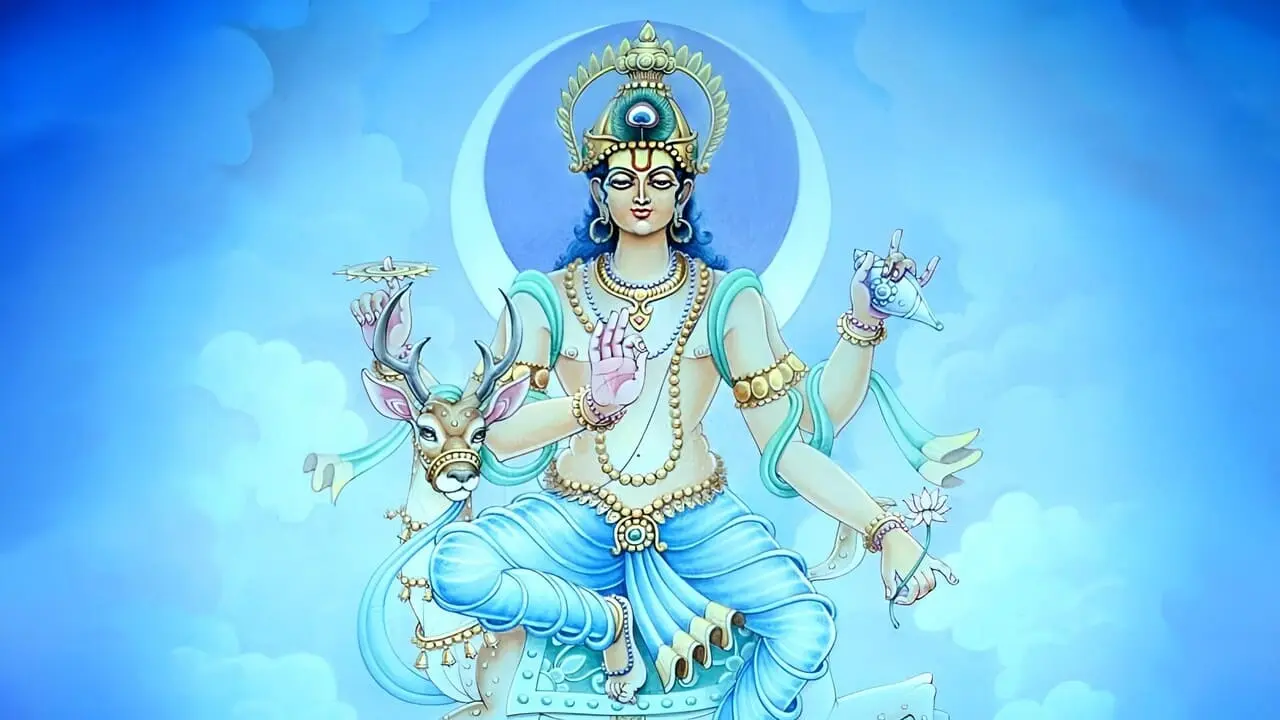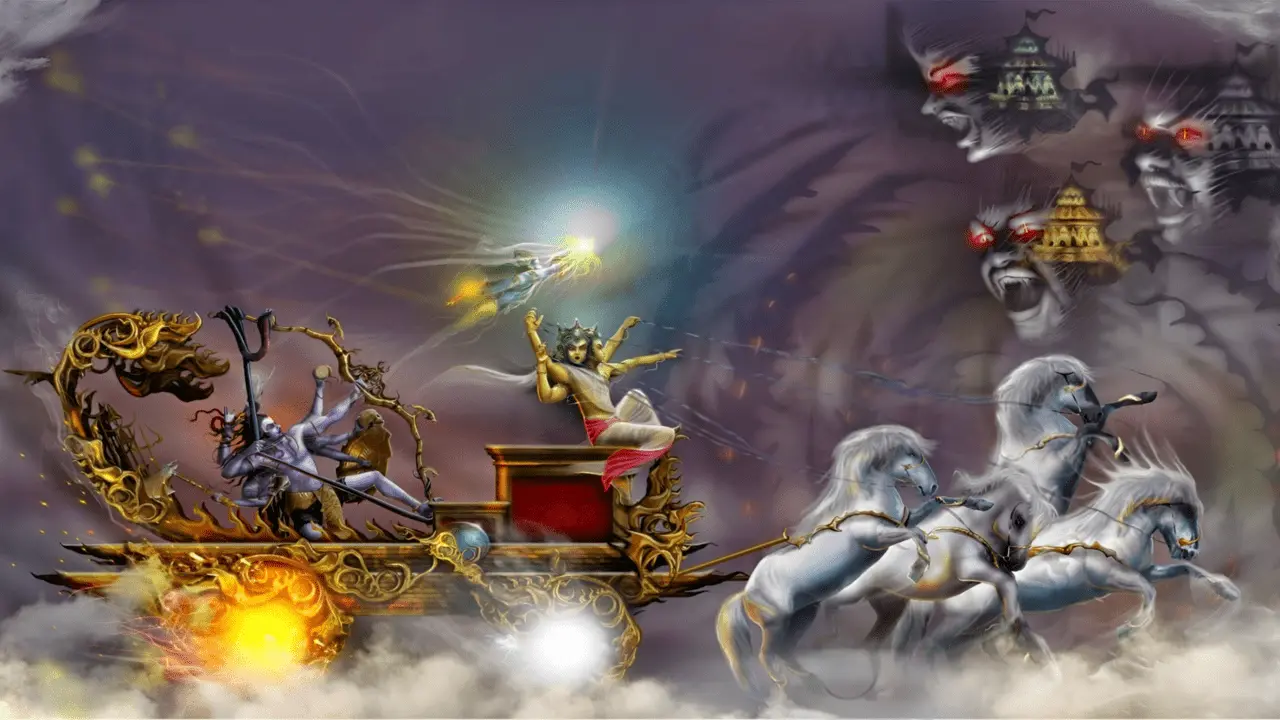
12 Jyotirlinga : The Sacred Pillars Of Light
The 12 Jyotirlinga shrines hold a significant place in Hindu history. According to a legend from the Shiva Purana, Brahma (the god of creation) and Vishnu (the god of preservation) once argued over their supremacy. To settle the debate, Shiva manifested as a massive, infinite pillar of light, known as the jyotirlinga, piercing through the three worlds.
Brahma and Vishnu decided to search for the end of the light, with Vishnu descending and Brahma ascending. Vishnu took the form of Varaha (a boar) for the task, while Brahma rode a Hamsa (swan). Brahma falsely claimed he had found the end of the light and presented a Ketaki flower as evidence, while Vishnu admitted he couldn’t find the end. Angered by Brahma’s dishonesty, Shiva cursed him to never be worshipped and blessed Vishnu with eternal worship for his honesty. Devotees revere the jyotirlinga temples as places where Shiva appeared as a column of light.
The 12 Jyotirlinga across India
1. Somnath Jyotirlinga
Location: Prabhas Patan, Gujarat
Origin Story: People believe the Somnath Temple is the first among the 12 Jyotirlinga, has an intriguing legend behind it. Chandra (the Moon God), who married 27 daughters of Daksha but favored Rohini, was cursed by Daksha to lose his luster. To redeem himself, Chandra performed rigorous penance and worshipped Lord Shiva at this sacred spot. Pleased by his devotion, Shiva relieved Chandra from the curse, allowing him to wax and wane in cycles.
Significance: The Somnath Temple is not only a spiritual beacon but also a symbol of resilience, having been reconstructed multiple times throughout history after numerous invasions.
2. Mallikarjuna Jyotirlinga
Location: Srisailam, Andhra Pradesh
Origin Story: This Jyotirlinga, nestled on the Shri Shaila Mountain near the Krishna River, narrates the touching story of Lord Shiva and Parvati visiting this place to console their son, Kartikeya, after he lost a race to his brother Ganesha. The temple thus signifies the deep bond of parental love and divine presence.
Significance: Mallikarjuna is both a Jyotirlinga and one of the 18 Maha Shakti Peethas, making it a crucial pilgrimage site for devotees of both Shiva and Shakti.
3. Mahakaleshwar Jyotirlinga
Location: Ujjain, Madhya Pradesh
Origin Story: In ancient times, the city of Ujjain was terrorized by a demon named Dushana. The desperate king and his citizens turned to Lord Shiva for help. In response, Shiva appeared in a fierce form and vanquished the demon, emerging as the Mahakaleshwar Jyotirlinga.
Significance: Uniquely, the Mahakaleshwar Temple is the only Jyotirlinga that faces south, believed to have the power to protect devotees from untimely death (Akaal Mrityu), ensuring a long and fulfilling life.
4. Omkareshwar Jyotirlinga
Location: Mandhata, Madhya Pradesh
Origin Story: The Omkareshwar Jyotirlinga, located on Mandhata Island in the Narmada River, is steeped in the legend of the Vindhya Mountain, which worshipped Lord Shiva here to gain blessings to become taller. Shiva, pleased with this devotion, manifested as the Omkareshwar Jyotirlinga.
Significance: The island is naturally shaped like the Hindu symbol ‘Om,’ adding to its spiritual importance. The temple is a major pilgrimage site, drawing devotees for its serene and divine ambiance.
5. Kedarnath Jyotirlinga
Location: Rudraprayag, Uttarakhand
Origin Story: After the Kurukshetra war, the Pandavas sought Lord Shiva to absolve their sins. However, Shiva, unwilling to forgive them easily, took the form of a bull and hid in the Garhwal Himalayas. When the Pandavas discovered him, Shiva dived into the ground, leaving his hump behind, which became the Kedarnath Jyotirlinga.
Significance: Kedarnath, one of the highest Jyotirlingas, is surrounded by majestic snow-capped peaks, making it both a spiritually and visually stunning pilgrimage site.
6. Bhimashankar Jyotirlinga
Location: Pune, Maharashtra
Origin Story: The Bhimashankar Jyotirlinga is connected to the tale of Bhima, the demon son of Kumbhakarna (Ravana’s brother). Bhima wreaked havoc on earth, troubling Shiva’s devotees. Responding to their prayers, Lord Shiva appeared and defeated Bhima in a fierce battle, manifesting as the Bhimashankar Jyotirlinga.
Significance: Nestled amidst dense forests, the Bhimashankar Temple offers a tranquil environment for worship and meditation. Moreover, its scenic location makes it a popular trekking destination.
7. Kashi Vishwanath Jyotirlinga
Location: Varanasi, Uttar Pradesh
Origin Story: According to legend, when the Goddess Annapurna (an incarnation of Parvati) stopped providing food to the world, even Lord Shiva had to go to Kashi (Varanasi) to beg for sustenance. Recognizing the importance of food, Parvati returned to offer nourishment to the world, leading Shiva to establish himself as Vishwanath (the Lord of the Universe) in Kashi, where he promised to remain eternally.
Significance: As the holiest of the 12 Jyotirlinga, the Kashi Vishwanath Temple symbolizes the indestructible nature of Lord Shiva, drawing countless devotees to its sacred grounds.
8. Trimbakeshwar Jyotirlinga
Location: Nashik, Maharashtra
Origin Story: The Trimbakeshwar Jyotirlinga is located near the origin of the Godavari River. The legend tells of Gautama Rishi, who accidentally killed a cow, a grave sin in Hindu belief. To atone, he worshipped Lord Shiva, who appeared and granted him the Jyotirlinga, purifying both Gautama and the place.
Significance: This temple is unique among the 12 Jyotirlinga, as it features three faces symbolizing Brahma, Vishnu, and Shiva. The nearby Brahmagiri hills and the origin of the Godavari River further enhance its sanctity.
9. Baidyanath Jyotirlinga
Location: Deoghar, Jharkhand
Origin Story: The Baidyanath Jyotirlinga is intricately linked to the story of Ravana, the demon king of Lanka, who worshipped Shiva with unparalleled devotion, offering his heads one by one. Impressed by his devotion, Shiva healed Ravana, earning the name Vaidyanath (the Lord of Physicians).
Significance: As one of the 12 Jyotirlinga, the Baidyanath Temple attracts devotees seeking relief from ailments, drawn by its association with healing and wellness.
10. Nageshwar Jyotirlinga
Location: Dwarka, Gujarat
Origin Story: The Nageshwar Jyotirlinga is tied to the tale of Supriya, a devotee of Shiva, who was imprisoned by the demon Daruka. Supriya’s unwavering devotion to Shiva brought the god to her aid, leading Shiva to defeat Daruka and manifest as the Nageshwar Jyotirlinga, symbolizing protection for his devotees.
Significance: The Nageshwar Temple stands as a testament to Shiva’s role as the guardian of his followers, emphasizing his protective power among the 12 Jyotirlinga.
11. Rameshwaram Jyotirlinga
Location: Rameshwaram, Tamil Nadu
Origin Story: On his journey to Lanka to rescue Sita, Lord Rama worshipped Lord Shiva at this site to absolve himself of any sins committed during his battle with Ravana. The Shiva Lingam established by Rama here became the Rameshwaram Jyotirlinga.
Significance: The Rameshwaram Temple is a major pilgrimage destination, representing Lord Rama’s devotion and the sanctity of the place. The confluence of the Indian Ocean and the Bay of Bengal adds to its spiritual aura among the 12 Jyotirlinga.
12. Grishneshwar Jyotirlinga
Location: Aurangabad, Maharashtra
Origin Story: The Grishneshwar Jyotirlinga is associated with the story of Kusuma, a devout woman who worshipped Lord Shiva with immense devotion. Even after her stepson killed her son, Kusuma continued her worship. Pleased with her devotion, Shiva restored her son’s life, manifesting as the Grishneshwar Jyotirlinga.
Significance: The temple is the last of the 12 Jyotirlinga and is known for its beautiful architecture and the deep faith of its devotees.
Dwadash Jyotirlinga Stotram
सौराष्ट्रे सोमनाथं च श्रीशैले मल्लिकार्जुनम्।
उज्जयिन्यां महाकालमोङ्कारममलेश्वरम्॥
परल्यां वैद्यनाथं च डाकिन्यां भीमशङ्करम्।
सेतुबन्धे तु रामेशं नागेशं दारुकावने॥
वाराणस्यां तु विश्वेशं त्र्यम्बकं गौतमीतटे।
हिमालये तु केदारं घुश्मेशं च शिवालये॥
एतानि ज्योतिर्लिङ्गानि सायं प्रातः पठेन्नरः।
सप्तजन्मकृतं पापं स्मरणेन विनश्यति॥
एतेषां दर्शनादेव पातकं नैव तिष्ठति।
कर्मक्षयो भवेत्तस्य यस्य तुष्टो महेश्वराः॥





